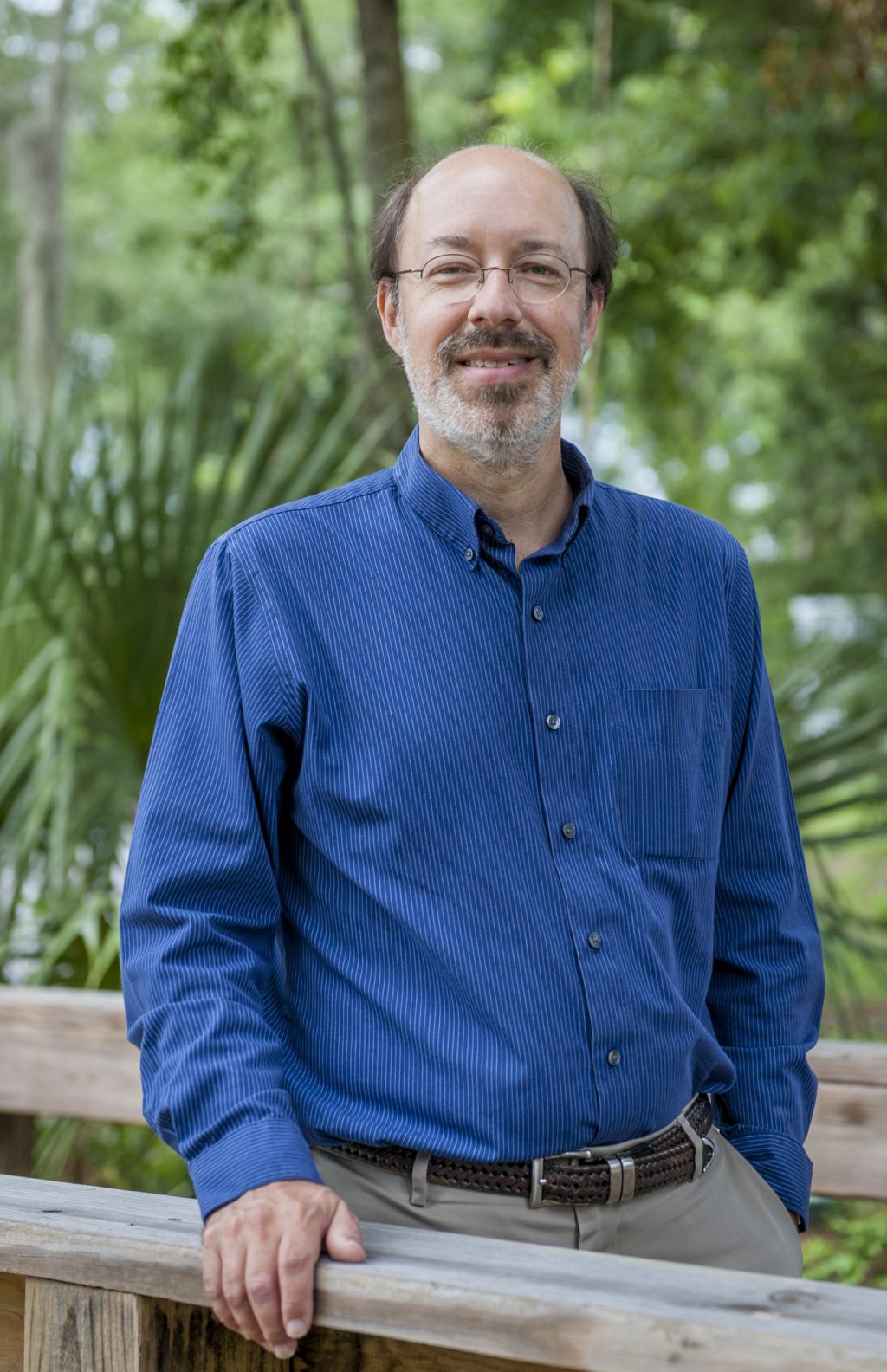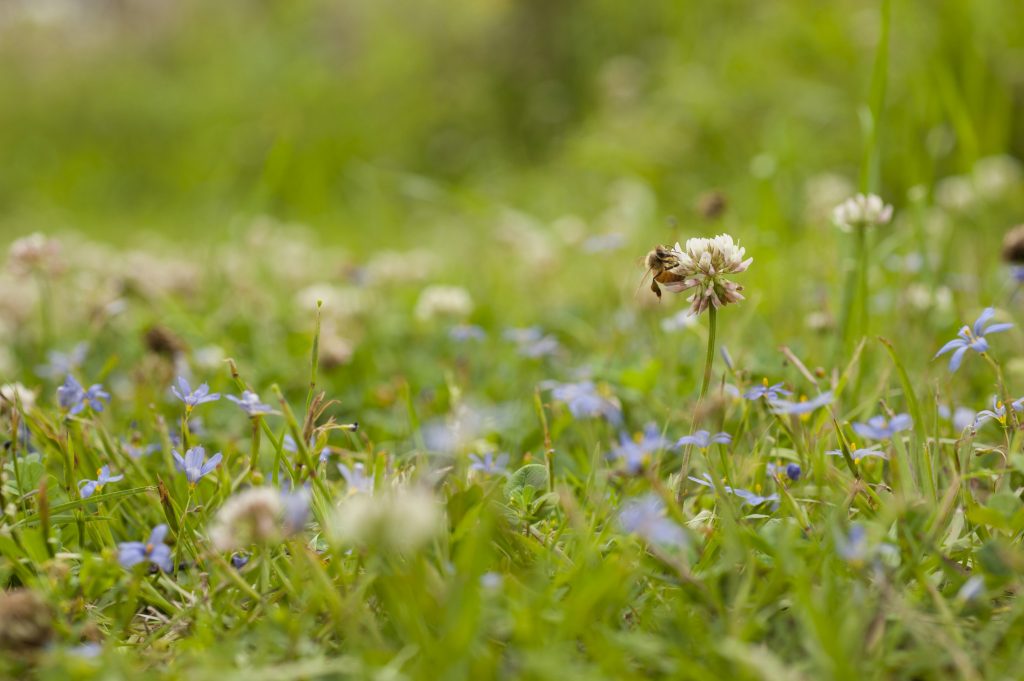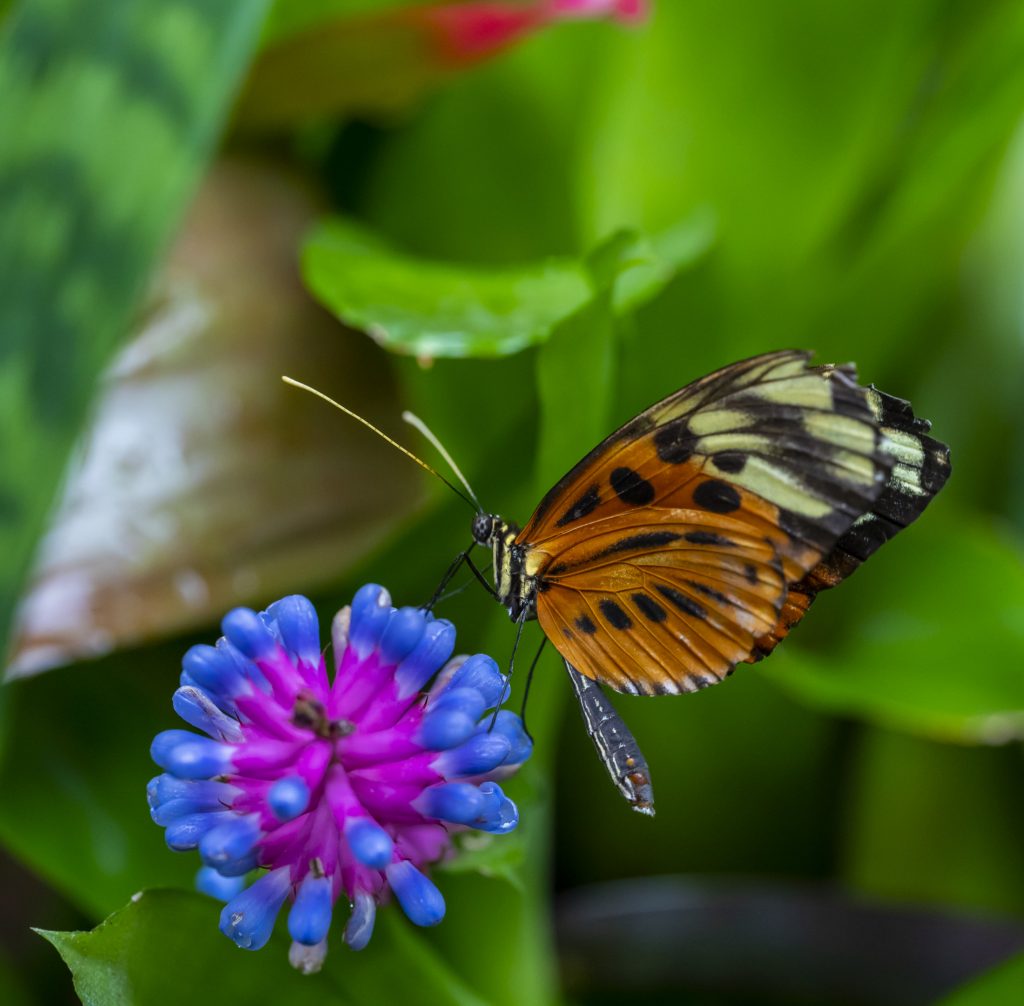A
pivotal new study led by NatureServe reveals that more than 22% of native pollinators in North America are at an elevated risk of extinction. This first-of-its-kind, taxonomically diverse assessment evaluated nearly 1,600 species—including bees, beetles, butterflies, moths, flower flies, bats and hummingbirds—shedding light on the growing biodiversity crisis affecting ecosystems and food security.
Key findings
- One in five pollinators at risk: 22.6% of assessed species face elevated extinction risk, underscoring an urgent need for conservation.
- Bees most threatened: 34.7% of assessed native bee species are at risk, particularly leafcutter and digger bees, which face the highest levels of imperilment.
- Bats vs. hummingbirds: All three pollinating bat species are at risk, while all hummingbirds were found to be at low extinction risk.
- Geographic hotspots: The highest concentrations of at-risk species are found in the American Southwest correlating with high species richness and climate-related stressors.
- Primary threats: Climate change, agriculture, habitat loss and urban development are the leading threats, varying regionally across North America.
Why it matters
Pollinators are vital for food production and ecosystem health, contributing over $15 billion annually to North American agriculture. Their decline threatens not only biodiversity but also the stability of food systems and human livelihoods. Without targeted conservation actions, the loss of pollinators could have cascading effects on plant reproduction, wildlife populations and ecosystem services.
Call to action
- For policymakers: Integrate at-risk pollinators into State Wildlife Action Plans and other conservation and management strategies to secure funding and protections.
- For land managers: Prioritize the conservation of habitats like grasslands, shrublands and woodlands that support the most at-risk pollinator communities. Implement best practices to reduce threats from agriculture, urban development and climate change.
- For the Public: Support pollinator-friendly practices such as reducing pesticide use, planting native flowers and creating habitats that provide food and shelter for pollinators year-round.
Q&A with study co-author Jaret Daniels, curator of Lepidoptera at the Florida Museum of Natural History’s McGuire Center for Lepidoptera and Biodiversity

Florida Museum photo by Kristen Grace
Q: You’ve been you’ve been in this business for a while, and pollinators, as a whole, have been declining for a long time. What do you think about the future, in terms of pollinators, and specifically the ones you’re most familiar with, Florida butterflies?
As far as butterflies go, Florida’s the most diverse state east of the Mississippi. We have a confluence of more northern species in the panhandle and species with Caribbean affinities in South Florida. We also have a lot of plant diversity, which begets insect diversity. The downside is that it’s also a heavily and increasingly more urbanized state. The remaining natural areas that we have not been conserved are increasingly at threat, primarily due to agricultural conversion and urbanization.
Fortunately, butterflies are a group the public really cares for, but there are many that are quite range restricted and highly adapted to specific habitats. A good example are several South Florida species that occur in rapidly diminishing pine rockland habitat or tropical hardwood systems. Historically, they were always range restricted, and now with urban development and other stressors, it’s a real challenge for them to thrive or even hang on in a lot of those areas. The threats mentioned in this study will only make things worse.
Q. What can the average Florida resident do to help pollinators?
The traditional Florida yard is turfgrass and ornamental plant heavy. There aren’t many native species, and there aren’t many species that produce resources such as fruits or flowers that are valuable for wildlife. The best recommendations are to reduce some of that turf area, diversify the landscape, increase floral resources and increase the number of native plants.
I’d argue this creates a win/win situation for pollinators and people. Pollinators get plants they can use for food and shelter, and people get a variety of benefits. It reduces the amount of water you need to use in your landscape, because native plants tend to be more drought tolerant and adapted to the soil and climate where they naturally occur. They also tend to have fewer pest problems, so you can reduce the amount of pesticides, and that reduces your cost and helps minimize non-target impacts to beneficial insects such as pollinators. You’re going to increase the curb appeal of your house because it’s going to be more interesting and colorful. You’re likely going to be more willing to be out in that space and see the wildlife it attracts. That positive experience hopefully keeps you engaged and can promulgate through your community. Maybe you get your neighbor excited to do something, and you build out a more connected suite of landscapes across an urban or suburban area that then allows species to move through that matrix of previously unsuitable habitat.
And you don’t have to go hog wild on this. Little changes can go a long way. Even for people who live in apartments, container gardens can be useful. They can attract species and can provide resources in an area where, traditionally, very little is around.
Simply being aware of the wildlife around you is also a net positive. There’s an old saying that we can only protect what we know and care about. If you don’t know it, you don’t have a connection to it. Often, when we go to locations where people have planted gardens that are teeming with pollinators, people are amazed at what’s there. Probably 99% of them are common insects, but it blows people away to see the things that are actually in their neighborhood that they can also attract. The end result is building more vibrant spaces for both humans and wildlife to coexist.
Q: What can be done, collectively, to save pollinators from extinction?
We no longer have the of luxury of saying only conservation spaces matter. We’re still losing species despite having parks and natural areas. So we have to do the best with all the landscapes that we as humans manage, and that extends to urban and suburban yards and neighborhoods. It extends to roadsides, to utility easements, to agricultural landscapes. We can work to tweak how all of these environments are designed and managed to better support a diversity of wildlife.
So, for example, our lab does work with the Florida Department of Transportation to plant milkweeds along roadsides, which can in turn be beneficial to adjacent local farms. Pollinators are mobile organisms, and they’re not just limited to a few feet of space. They’re often foraging hudreds of meters or even a few kilometers away from their nest. So if roadsides are managed well and support pollinators, they’re going to spill over into the nearby blueberry farm or squash farm or vegetable garden or natural area. Farmers benefit from having increased pollination services, which can drive up fruit quality and yields.
Q: Many of the plants we grow for fruits and vegetables in North America are pollinated by the non-native western honey bee, which is shipped long distances throughout much of the year to farms as different crops come into bloom. Why then are native pollinators so important?
The importance of the western honey bee to agricultural production cannot be overstated. They provide valuable pollination services to a wide range of key crops. But this service is not free. It costs growers money to bring honeybees in. And western honeybees are susceptable to various diseases and pests, and they could be at even further risk with climate change. It’s akin to planning for retirement. If you have one stock, and that stock tanks, you’re out of luck. But if you have a diverse portfolio, you can more easily weather the ups and downs. Having a diverse portfolio of different pollinator species in the background that vary ecologically, biologically, phenologically and behaviorally represents our safety net in a changing world.
About the study
Published in PNAS (Proceedings of the National Academy of Sciences of the United States of America), the study represents the largest, most comprehensive assessment of pollinator extinction risk in mainland North America to date. The research was conducted by a team of experts from NatureServe, NatureServe Canada, the Xerces Society, academic institutions, and government agencies, utilizing the NatureServe conservation status assessment methodology widely adopted by U.S. and Canadian governments.
Source: Jaret Daniels, jdaniels@flmnh.ufl.edu
Media contacts: Samantha Belilty, Sam@natureserve.org, 703-908-1871;
Jerald Pinson, jpinson@flmnh.ufl.edu, 352-294-0452


